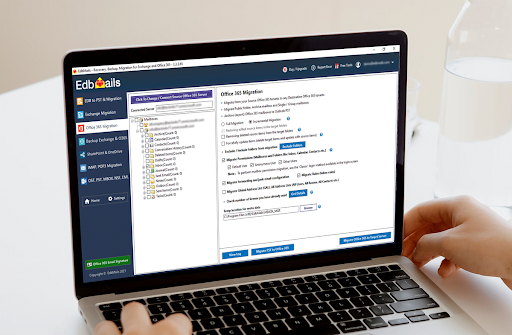However, in-person transactions start at 2.6% plus 10 cents and go up to 3.5% plus 10 cents per transaction, depending on whether you use Register or Register Lite. While Clover doesn’t offer a free POS plan, subscriptions start at $14.95 per month and go up to $175 per month. Depending on your industry, hardware might be included in your monthly cost. This system also comes with handy features such as the ability to send invoices, accept manual transactions and receive introductory pricing on your first card reader.
- Organizations that underwent extensive cloud migration incurred an average cost of $ 5.63 million.
- They allow you to leverage the resources and services from different computing environments and choose which is the most optimal for the workloads.
- The global market share of the top cloud infrastructure service providers reached $63 billion in Q1 2023.
- Red Hat Enterprise Linux A flexible, stable operating system to support hybrid cloud innovation.
- You will need to move your services, apps, and data from on-premises data centers to the chosen cloud environment.
- Information provided on Forbes Advisor is for educational purposes only.
- Cloud applications allow for data access, storage, sharing, and all types of collaborations through a web browser.
Smart Analytics Solutions Generate instant insights from data at any scale with a serverless, fully managed analytics platform that significantly simplifies analytics. Telecommunications Hybrid and multi-cloud services to deploy and monetize 5G. Financial Services Computing, data management, and analytics tools for financial services. Choosing the best model of Cloud Services for an organization should be https://www.globalcloudteam.com/what-are-cloud-technology-solutions/ based on benefits, usability, cost efficiency, unique needs, and the size of the business. As Cloud Services can be a complex topic to navigate, consider speaking with an experienced Cloud Services expert to learn more about these models. Platforms as a Service remove the need for organizations to manage the underlying infrastructure and allow you to focus on deploying and managing your applications.
Disadvantages of using Community cloud are:
With IaaS, the service provider owns and operates the infrastructure, but customers will need to purchase and manage software, such as operating systems, middleware, data, and applications. Public clouds https://www.globalcloudteam.com/ deliver resources, such as compute, storage, network, develop-and-deploy environments, and applications over the internet. They are owned and run by third-party cloud service providers like Google Cloud.

It allows you to develop applications without worrying about hardware or operating systems, whereas in IaaS setups, you have to build and maintain the servers yourself. Then, there’s the private cloud, which refers to the setup where a specific cloud is delivered to your organization. Government agencies and other entities that require more control over their IT infrastructure often leverage the private cloud. The company itself or a trusted third party can manage the private cloud.
How PaaS, IaaS, and SaaS are separated at a service level
PayPal Zettle is ideal for businesses on the go, such as food trucks or service providers who make house calls. The low per-transaction fee for QR code payments is very attractive for those who process a lot of mobile payments. Cloud security protects data and online assets stored in cloud computing servers on behalf of their client users.
Kathy Haan, MBA is a former financial advisor-turned-writer and business coach. For over a decade, she’s helped small business owners make money online. When she’s not trying out the latest tech or travel blogging with her family, you can find her curling up with a good novel. To get the best possible experience please use the latest version of Chrome, Firefox, Safari, or Microsoft Edge to view this website. It allows the IT team to quickly allocate and deliver on-demand IT resources. File transfer protocol is a mechanism for the transfer of files between systems.
Infrastructure as a Service
Cloud services’ ability to scale as per business needs is an invaluable attribute. It relieves an organization from investment in IT infrastructure resources and software applications as all are provided by a cloud services vendor. Scalability occurs in two ways; increasing user licenses during business booms or enhancing application software to cater to a growing business. Hybrid clouds allow organizations that use on-premises infrastructure but need the expanded scalability to move to a public cloud to meet its demands. Sensitive data can be retained on on-premises private cloud whilst employees can access applications and other resources on the public cloud for their day-to-day needs.

With its limited metadata, block storage is able to deliver the ultra-low latency required for high-performance workloads and latency sensitive applications like databases. Traditional on-premises storage solutions can be inconsistent in their cost, performance, and scalability — especially over time. Analytics demand large-scale, affordable, highly available, and secure storage pools that are commonly referred to as data lakes. File-based storage or file storage is widely used among applications and stores data in a hierarchical folder and file format. This type of storage is often known as a network-attached storage server with common file level protocols of Server Message Block used in Windows instances and Network File System found in Linux.
Three Types of Cloud Services
Check out our agent-based solution by starting a 14-day trial of PDQ Connect. Just like in on-prem environments, cloud infrastructure is susceptible to threats, such as ransomware. However, ransomware attacks against cloud environments may be less expensive to recover from. Any type of technology with an internet connection has security risks, including cloud computing. You will still be liable for what occurs within your network and in your product. So – if you’re wondering what are the disadvantages of cloud computing – you are in the right place.
WithIBM Code Engine, a fully managed, serverless platform, IBM Cloud Code Engine will manage and secure the underlying infrastructure for you. Bring your container images, batch jobs, or source code and let IBM handle the size, deployment and scaling of your container clusters. Obviously, the as-a-service solution a customer chooses depends first on the functionality the customer requires, and the expertise it has on staff. For example, an organization without the in-house IT expertise for configuring and operating remote servers isn’t well matched to IaaS; an organization without a development team has no need for PaaS. Today, just about any personal or employee productivity application is available as SaaS; specific use cases are too numerous to mention . SaaS, or software as a service, is on-demand access to ready-to-use, cloud-hosted application software.
Google Cloud Run: Automatically Scale Stateless Containers
Linux is the most widely used cloud computing operating system as it runs about 90% of the public cloud workload and is also used by nine of the top ten cloud service providers. They can also be referred to as cloud computing; hence the words can be used interchangeably. Deploying resources on-premises, using virtualization and resource management tools, is sometimes called “private cloud”.
It also lets users upgrade software more quickly because software companies can offer their products via the web rather than through more traditional, tangible methods involving discs or flash drives. For example, Adobe customers can access applications in its Creative Cloud through an Internet-based subscription. Cloud bursting allows information centers to develop an in-house IT facilities that assists average works, and use cloud sources from public or private clouds, during spikes in processing demands. By utilizing “hybrid cloud” architecture, firms and individuals have the ability to acquire diplomas of mistake tolerance combined with locally prompt functionality without dependence on internet connectivity.
Cloud Computing Services:
Organizations mostly opt for cloud migration due to the outdated legacy infrastructure that isn’t able to cope with modern digital transformation. Outdated software solutions and servers and unreliable security policies are the main factors hindering growth. With advancements in modern cloud services, more and more organizations are gradually shifting their workload, application, and service to the cloud. Infrastructure as a Serviceoften provides the infrastructure such as servers, virtual machines, networks, operating system, storage, and much more on a pay-as-you-use basis.



















